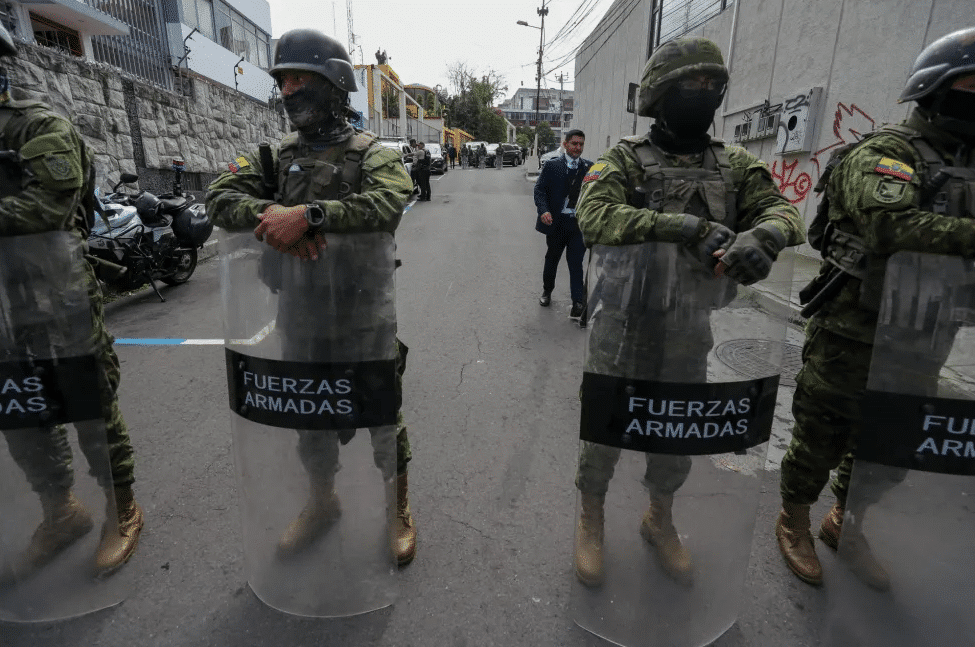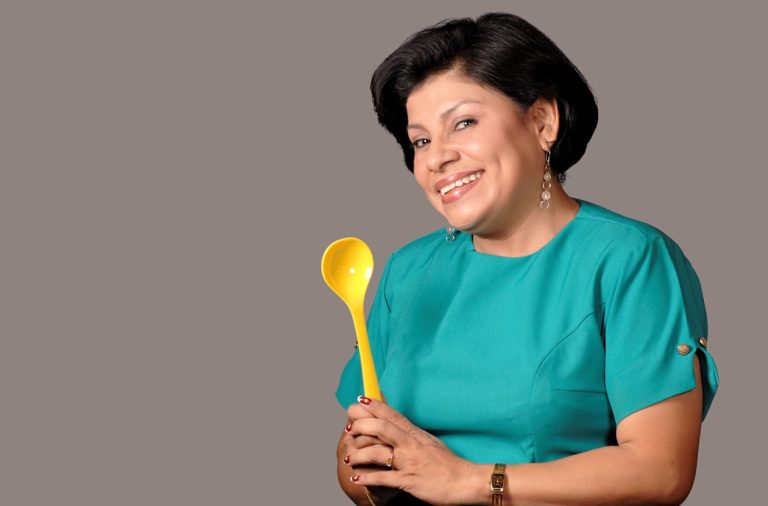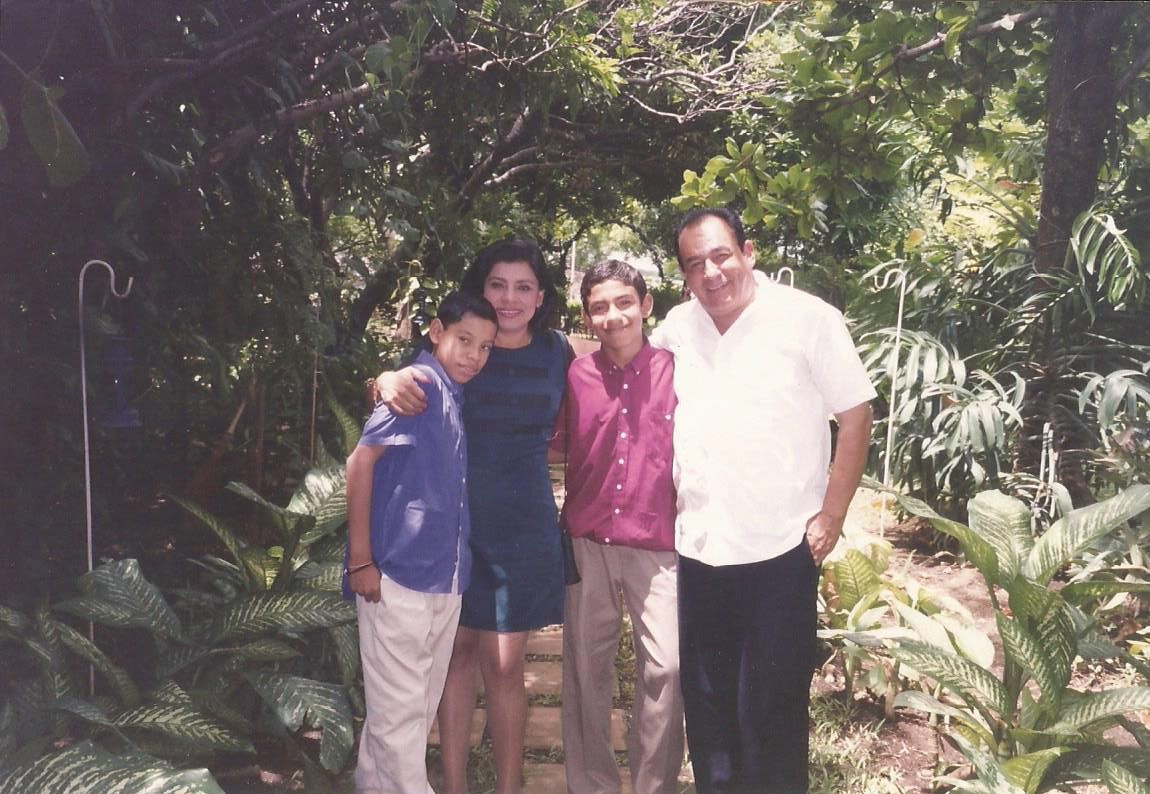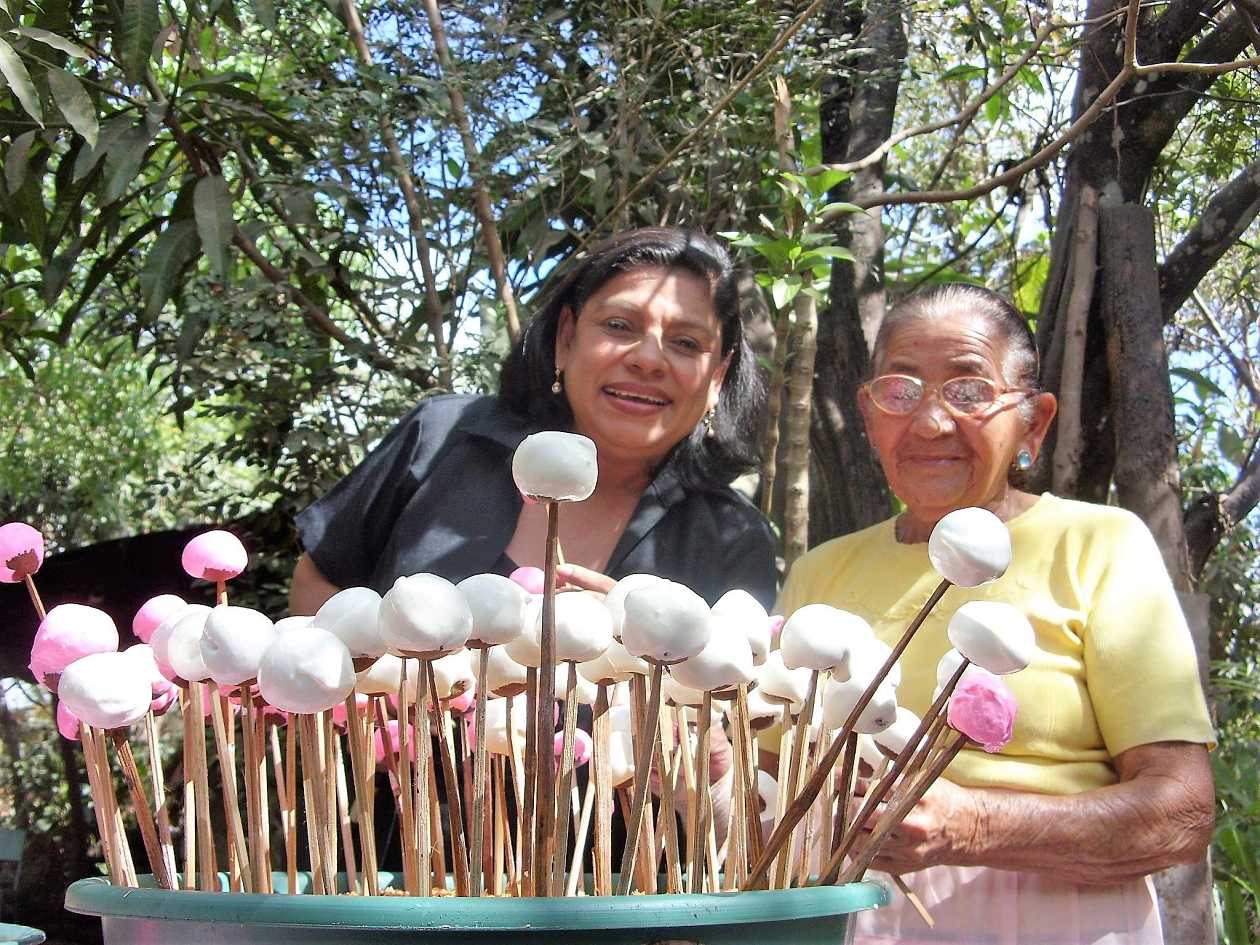30 de agosto 2020

The Return of the Military

PUBLICIDAD 1M
PUBLICIDAD 4D
PUBLICIDAD 5D
Over 100,000 YouTube subscribers follow the cooking indications on Maria Esther Lopez’ program, “My seasoning”.

Over 100
“I always say: ‘If Maria Esther’s channel should disappear, I don’t know what I’d do,” says Cristina Calvo, a Nicaraguan living outside the country. “I can do anything in the kitchen with Maria Esther Lopez giving me strength,” says William Calderon, laughing. Calderon is a Nicaraguan singer who’s spent the last eight years living in Madrid, Spain.
“She always encourages the youth to recover the Nicaraguan flavors and traditions. I’ve managed to learn a lot with her channel and to surprise my family with delicious pastries like Pio V, and ‘drunk soup’ [sopa borracha],” adds Hector Chavarria, a youth from Managua.
Who is Maria Esther Lopez and why does she inspire so much admiration and gratitude? Founder, director and host of the Nicaraguan cooking program “Nicaragua en mi sazon” [Nicaragua in my seasoning”], Maria Esther describes herself as “the queen of Nicaraguan flavor”.
Her YouTube channel has reached over a hundred thousand subscribers. She’s a cultural reference that continues to be relevant among audiences from different generations, including the very youngest, who seek to learn from her how to prepare their favorite Nicaraguan dishes.
A tweet asking who had cooked with her was enough to elicit multiple responses expressing gratefulness, admiration, and affection from Nicaraguans both within and outside of the country.

The team of presenters of El Clan de la Picardia, a cultural program broadcast on Channel 2 from 1996 to 2008. From left to right: Amadeus Nicoya "El Chompipín", María Esther López, Mendelson Nicoya and Carlos Mejía Godoy. // Photo: Courtesy.
Lopez is a native of the “Maria Auxiliadora” neighborhood in Managua. She shared with us her stories about recovering and preserving the national cuisine, as well as of her multifaceted career that began when she was 16.
I was raised in the heart of an extremely poor family, where at times we went to bed without anything to eat, or we got up without eating. I can’t say that this business of the kitchen was any kind of a family inheritance, because that wouldn’t be at all true,” she says. She’s self-taught and remains passionate about Nicaraguan culture.
Those two qualities led her to become involved in the world of media and cultural promotion at a very early age. She began as a radio copywriter, then worked in the eighties as a producer of popular programs such as: La Liga del Saber [The Knowledge League], El Pollito Intellectual [The Intellectual Little Chicken], and later in El Clan de la Picardia [The Mischief Clan], which was broadcast over Channel 2, at that time the most viewed channel in Nicaragua.
In the latter, which she worked on from 1997 until 2008 together with singer-songwriter Carlos Mejia Godoy, Maria Esther Lopez produced and presented an entertaining program where they crossed Nicaragua to document and promote popular culture. Her two sons joined in with the adventure, and also became well-loved presenters. Mendelson was the M.C., and Amadeus took the role of El Chompipin [The big turkey.]
Lopez considers this one of the most excellent cultural programs on television, one that took a lot of resources and hard work. She feels it was worth it, because it succeeded in promoting the message of Nicaraguan pride among musical groups and even on the television channels. “I mentioned to Carlos [Mejia] the other day how lovely it was to have generated a patriotic spirit and pride. I believe that for Nicaragua, El Clan de la Picardia demonstrated that we can create cultural programming that is worthy, respectful and has depth of content.”
“Nicaragua in my seasoning” was born as a segment within El Clan de la Picardia. When that show came to an end, Lopez decided to go ahead with the idea. She poured her energy into studying, documenting, and promoting the local cuisine.
“I have a sizable bibliography on international cuisine, and, of course, the background work that I’ve done through direct research, going to the different population centers in our beloved Nicaragua to seek out and find that local cooking. Everything that I discuss on my show is because I went directly to the source to be able to share it. It’s a process of investigation that I’ve been doing for 21 years,” she explains.
In fact, there isn’t a vast bibliography on Nicaraguan cuisine. There were a few works that predated the internet, such as the essay from poet Jose Coronel Utrecho, “In Praise of Nicaraguan Cooking” [Elogio a la Cocina Nicaraguense], published in 1962; 50 anos en la Cocina [50 Years in the Kitchen] by Angelica Vivas, that came out for the first time in 1981; and Jaime Wheelock’s book published in 1998, La Cocina Nicaraguense [The Nicaraguan Kitchen]. There are also Fenando Silva’s Los Siete Bocados Capitales [The Seven Major Dishes]; and Lo que Sabe el Paladar [What the Palate Knows], a dictionary of Nicaraguan foods by Sergio Ramirez. This list has now been enriched by the contributions of Maria Esther Lopez.
“Nicaragua in my Seasoning” began as a television program broadcast on the “100% News” television channel, in addition to Channels 8 and 11. It was also on the radio, came out in magazine format, and even spawned a music album with songs that are also step-by-step recipes. Two books, also very prized, have been published: Cocinando con Maria Esther [Cooking with Maria Esther] Volumes I and II.

María Esther López has traveled through Nicaragua interviewing its population to record the secrets and instructions of Nicaraguan cuisine and thus maintain its authenticity. // Photo: Courtesy
Now, from the platform of YouTube and on social media, Maria Esther Lopez has consolidated her position as the expert on Nicaraguan cuisine to which Nicaraguans all over the world look. The majority of her followers are from Nicaragua, followed by those who watch her in the United States, Costa Rica, Panama, Colombia, and Spain.
“Thanks to the recipes she uploads onto the YouTube channel, all the Nicaraguans who are outside of Nicaragua and want to recall a piece of our land can learn. I like to cook Nicaraguan food to remember, especially the things that my mother used to make for me when I was little and I lived in Nicaragua,” states Arturo Aguilar, a Nicaraguan living in Tampa, Florida.
Among the Nicaraguan community outside the country, Maria Esther’s help is greatly appreciated. The dishes she features satisfy the yearning that comes from nostalgia for one’s home country. She recognizes this. “No one knows what they have until they lose it. You find yourself with that nostalgia, that natural feeling of missing the simplest things, things that because they’re simple, everyday experiences, you didn’t value at the time.”
“Now that I’m not in my country when I eat Nicaraguan food, I feel happy. The time that I made enchiladas, it brought back memories of when I would go with my best friend, who lived two blocks from my house, to where they sold some delicious enchiladas,” comments Sonia Garcia, a Nicaraguan living in Panama. Sonia says that she prepares a Nicaraguan dish every two weeks, and in that way feels closer to her country.
Even though certain basic ingredients may be hard to find outside the country, such as achiote, bitter orange, Nicaraguan farmer’s cheese or black vinegar, with Lopez’ help, Nicas can venture on. Maria Ester reports that the recipe most often reproduced on her channel is arroz con leche, rice pudding. Other popular recipes include grilled meat (churrasco), the triangular sweet rolls known as picos, the slow-cooked meat and plantain dish known as vaho, and the mixture of shredded meat and cornmeal known as Indio Viejo.
Her own favorite dish, she admits, is the tripe stew Mondongo. And, in passing, she enters the age-old controversy regarding what starch should accompany the native meat and rice stuffed Nacatamal. She eats it with a tortilla, she says laughing, knowing that her answer will cause a stir among those who favor eating it with bread.
Her vast experience in this field has given Maria Esther the authority to voice her opinions on the most important features of Nicaraguan food. “Nicaraguan cooking has a particular touch which comes out of the simple and natural. Our grandparents cooked with onions, green peppers, garlic, a few vegetables and other things. We’re the ones who’ve gotten tangled up. We’re too lazy to make a tomato paste, so we prefer to buy the can that comes with preservatives. What happens, then, is that you’re playing with your health, but also scorning your culinary identity,” she affirms.
The simple and natural is part of Maria Esther Lopez’ essence, and it’s also what captivates her audience. Long before it was a trend for social networks to show personalities and public figures in an authentic and relaxed manner in real backdrops like their homes, Maria Esther was already appearing that way on her program, which she records from the kitchen of her home.
“The program is pleasant and interesting. I’ve made enchiladas with her, indio viejo; she makes you see that cooking is easy, it’s not something difficult,” says Karla Jimenez, one of Maria Esther’s admirers.
“The first thing is to be authentic, right? The second is to believe in what you’re doing. And the third is to document what you’re doing. Even though I’m somewhat familiar with international culinary terminology, I always try to use simpler words when I talk, explaining in the most concrete way, but also with words that we use daily,” she continues.
Maria Esther Lopez has had a varied career. The Nicaraguan public also remembers her as an actress in two Nicaraguan movies – the well-known film La Yuma in 2008, and La Pantalla Desnuda (“The Naked Screen”) in 2014 – both directed by Florence Jaugey. “To me, La Yuma wasn’t only a matter of participating as an actress in the cast, but it was also an opportunity to talk about Nicaragua,” Maria Esther recalls. She traveled to Brazil, Chile, and Costa Rica as an ambassador for the film.
However, her priority is clear: promoting and maintaining Nicaraguan cuisine, especially among the young. “What fills me with satisfaction is that, with all the work we’re doing on social media, there are a lot of young people involved, with an attitude of: ‘I want to learn. I didn’t know, but, this is great!’ I believe we’re achieving our objective,” she says with satisfaction.
Precisely in order to maintain her focus, Maria Esther doesn’t talk about politics.
You’ve managed to position yourself and maintain yourself as a relevant figure in the middle of a Nicaragua that today is quite polarized, especially on topics of politics. How do you manage that?
“Look, I’m a person that likes to focus my energy where I feel I can be useful. I’ve always said: ‘Don’t talk to me about politics, because I don’t delve into politics, I don’t know anything about politics.’ The only thing I want is for people to understand that Nicaragua has a face, from a cultural point of view, that is marvelous, that’s immensely rich in all its facets. In the end, that’s what I want to promote because that’s what I’ve dedicated myself to,” she responds.
Even though some people insist on asking her or demanding that she take one position or another, Maria Esther says that she’s firm and transparent. “People understand that this is my thing, and I’ve created like a chapel where I receive anyone that wants to talk about culture… In the end, to me, that’s the best thing I’ve done… People are clear that I’m here working on something different, a conscious work. A work undertaken with responsibility, to promote and recover our popular Nicaraguan culture.”
The hundred thousand subscribers to her YouTube channel and her many admirers support that decision.
PUBLICIDAD 3M
Periodista nicaragüense desde 2007, con experiencia en prensa escrita, televisión y medios digitales. Tiene una especialización en producción audiovisual y una maestría en Medios de Comunicación, Estudios de Paz y Conflicto de la Universidad para la Paz de las Naciones Unidas. Fundadora y editora de Nicas Migrantes, proyecto por el cual ganó el Impact Award 2022 del Departamento de Estado de EE. UU. Ha realizado coberturas in situ en Los Ángeles (Estados Unidos), México, El Salvador, Guatemala, Nicaragua y Costa Rica. También ha colaborado con France 24, The Guardian, Al Jazeera, BBC World Service. Ha sido finalista y ganadora de varios premios nacionales e internacionales, entre ellos el Premio Latinoamericano de Periodismo de Investigación Javier Valdez, del Instituto Prensa y Sociedad (IPYS), 2022.
PUBLICIDAD 3D